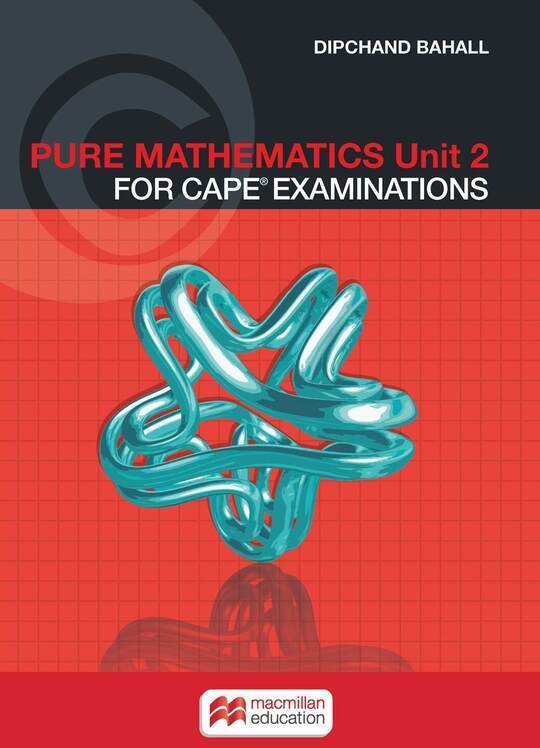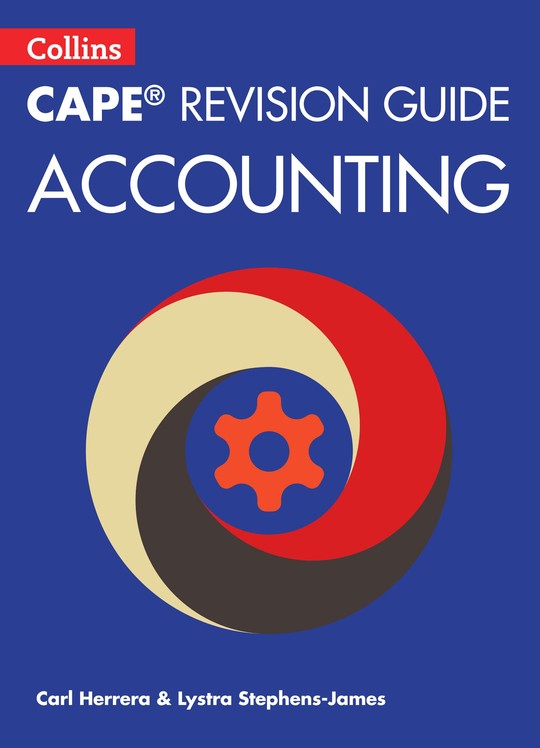
Maths for CAPE® Examinations Volume 1
US$ 27.71
The publisher has enabled DRM protection, which means that you need to use the BookFusion iOS, Android or Web app to read this eBook. This eBook cannot be used outside of the BookFusion platform.
Description
Contents
Reviews
Language
English
ISBN
9780230465756
Cover
Title Page
Copyright
Contents
INTRODUCTION
MATHEMATICAL MODELLING
MODULE 1 BASIC ALGEBRA AND FUNCTIONS
CHAPTER 1 REASONING AND LOGIC
Notation
Simple statement
Negation
Truth tables
Compound statements
Connectives
Conjunction
Disjunction (‘or’)
Conditional statements
Interpretation of p → q
The contrapositive
Converse
Inverse
Equivalent propositions
Biconditional statements
Tautology and contradiction
Algebra of propositions
CHAPTER 2 THE REAL NUMBER SYSTEM
Subsets of rational numbers
Real numbers
Operations
Binary operations
Closure
Commutativity
Associativity
Distributivity
Identity
Inverse
Constructing simple proofs in mathematics
Proof by exhaustion
Direct proof
Proof by contradiction
Proof by counter example
CHAPTER 3 PRINCIPLE OF MATHEMATICAL INDUCTION
Sequences and series
Finding the general term of a series
Sigma notation
Expansion of a series
Standard results
Summation results
Mathematical induction
Divisibility tests and mathematical induction
CHAPTER 4 POLYNOMIALS
Review of polynomials
Degree or order of polynomials
Algebra of polynomials
Evaluating polynomials
Rational expressions
Comparing polynomials
Remainder theorem
The factor theorem
Factorising polynomials and solving equations
Factorising xn - yn
CHAPTER 5 INDICES, SURDS AND LOGARITHMS
Indices
Laws of indices
Surds
Rules of surds
Simplifying surds
Conjugate surds
Rationalising the denominator
Exponential functions
Graphs of exponential functions
The number e
Exponential equations
Logarithmic functions
Converting exponential expressions to logarithmic expressions
Changing logarithms to exponents using the definition of logarithm
Properties of logarithms
Solving logarithmic equations
Equations involving exponents
Change of base formula (change to base b from base a)
Logarithms and exponents in simultaneous equations
Application problems
Compound interest
Continuous compound interest
CHAPTER 6 FUNCTIONS
Relations and functions
Describing a function
The vertical line test
One-to-one function (injective function)
Onto function (surjective function)
Bijective functions
Inverse functions
Graphs of inverse functions
Odd and even functions
Odd functions
Even functions
Periodic functions
The modulus function
Graph of the modulus function
Composite functions
Relationship between inverse functions
Increasing and decreasing functions
Increasing functions
Decreasing functions
Transformations of graphs
Vertical translation
Horizontal translation
Horizontal stretch
Vertical stretch
Reflection in the x-axis
Reflection in the y-axis
Graphs of simple rational functions
Piecewise defined functions
CHAPTER 7 CUBIC POLYNOMIALS
Review: Roots of a quadratic and the coefficient of the quadratic
Cubic equations
Notation
Finding a3 + ß3 + y3, using a formula
Finding a cubic equation, given the roots of the equation
CHAPTER 8 INEQUALITIES AND THE MODULUS FUNCTION
Theorems of inequalities
Quadratic inequalities
Sign table
Rational functions and inequalities
General results about the absolute value function
Square root of x2
The triangle inequality
Applications problems for inequalities
MODULE 1 TESTS
MODULE 2 TRIGONOMETRY AND PLANE GEOMETRY
CHAPTER 9 TRIGONOMETRY
Inverse trigonometric functions and graphs
Inverse sine function
Inverse cosine function
Inverse tangent function
Solving simple trigonometric equations
Graphical solution of sin x = k
Graphical solution of cos x = k
Graphical solution of tan x = k
Trigonometrical identities
Reciprocal identities
Pythagorean identities
Proving identities
Solving trigonometric equations
Further trigonometrical identities
Expansion of sin (A ± B)
Expansion of cos (A ± B)
Expansion of tan (A + B)
Double-angle formulae
Half-angle formulae
Proving identities using the addition theorems and the double-angle formulae
The form a cos Ɵ + b sin Ɵ
Solving equations of the form a cos Ɵ + b sin Ɵ = c
Equations involving double-angle or half-angle formulae
Products as sums and differences
Converting sums and differences to products
Solving equations using the sums and differences as products
CHAPTER 10 COORDINATE GEOMETRY
Review of coordinate geometry
The equation of a circle
Equation of a circle with centre (a, b) and radius r
General equation of the circle
Intersection of a line and a circle
Intersection of two circles
Intersection of two curves
Parametric representation of a curve
Cartesian equation of a curve given its parametric form
Parametric equations in trigonometric form
Parametric equations of a circle
Conic sections
Ellipses
Equation of an ellipse
Equation of an ellipse with centre (h, k)
Focus–directrix property of an ellipse
Parametric equations of ellipses
Equations of tangents and normals to an ellipse
Parabolas
Equation of a parabola
Parametric equations of parabolas
Equations of tangents and normals to a parabola
CHAPTER 11 VECTORS IN THREE DIMENSIONS (R3)
Vectors in 3D
Plotting a point in three dimensions
Algebra of vectors
Addition of vectors
Subtraction of vectors
Multiplication by a scalar
Equality of vectors
Magnitude of a vector
Displacement vectors
Unit vectors
Special unit vectors
Scalar product or dot product
Properties of the scalar product
Angle between two vectors
Perpendicular and parallel vectors
Perpendicular vectors
Parallel vectors
Equation of a line
Finding the equation of a line given a point on a line and the direction of the line
Finding the equation of a line given two points on the line
Vector equation of a line
Parametric equation of a line
Cartesian equation of a line
Finding the angle between two lines, given the equations of the lines
Skew lines
Equation of a plane
Equation of a plane, given the distance from the origin to the plane and a unit vector perpendicular to the plane
Equation of a plane, given a point on the plane and a normal to the plane
Cartesian equation of a plane
MODULE 2 TESTS
MODULE 3 CALCULUS I
CHAPTER 12 LIMITS AND CONTINUITY
Limits
The existence of a limit
Limit laws
Evaluating limits
Direct substitution
Factorising method
Conjugate method
Tending to infinity
Limits at infinity
Special limits
Continuity
Types of discontinuity
Infinite discontinuity
Point discontinuity
Jump discontinuity
Removable and non-removable discontinuity
CHAPTER 13 DIFFERENTIATION 1
Differentiation
The difference quotient
Existence of a derivative
Notation for derivatives
Interpretations of derivatives
Finding derivatives using first principles
Differentiation of ag(x) where a is a constant
Differentiation of sums and differences of functions
First principle and sums and differences of functions of x
Rate of change
Chain rule
Product rule
Quotient rule
Differentiation of trigonometric functions
Higher derivatives
CHAPTER 14 APPLICATIONS OF DIFFERENTIATION
Tangents and normals
Equations of tangents and normals
Increasing and decreasing functions
Stationary points/second derivatives
Maximum and minimum values
Stationary points
Classification of turning points
First derivative test
Second derivative test
Inflexion points
Practical maximum and minimum problems
Parametric differentiation
Rate of change
Curve sketching
Polynomials, rational functions, trigonometric functions
Graph of a polynomial
Graphs of functions of the form f(x) = xn where n is an even integer
Graphs of functions of the form f(x) = xn where n is an odd integer greater than 1
Graphs of polynomials
Zeros of a polynomial
Graphing functions
Graphing functions with a table of values
Solving simultaneous equations graphically
Solving inequalities graphically
Review of trigonometry
Sine, cosine and tangent of 45°, 30° and 60°
Graph of cosec x
Graph of sec x
Graph of cot x
Properties and graphs of trigonometric functions
Transformations of trigonometric functions
y = a sin (bx) + c and y = a cos (bx) + c
y = a tan (bx) + c
Graphs of rational functions
Vertical asymptotes
Horizontal asymptotes
Sketching graphs of rational functions
Shape of a curve for large values of the independent variable
CHAPTER 15 INTEGRATION
Anti-derivatives (integrations)
The constant of integration
Integrals of the form axn
Integration theorems
Integration of polynomial functions
Integration of a function involving a linear factor
Integration of trigonometric functions
Integration of more trigonometric functions
Integrating sin2 x and cos2 x
Integration of products of sines and cosines
The definite integral
Integration by substitution
Substituting with limits
The equation of a curve
CHAPTER 16 APPLICATIONS OF INTEGRATION
Approximating the area under a curve, using rectangles
Estimating the area under a curve using n rectangles of equal width
Using integration to find the area under a curve
Area between two curves
Area below the x-axis
Area between the curve and the y-axis
Volume of solids of revolution
Rotation about the x-axis
Rotation about the y-axis
Volume generated by the region bounded by two curves
CHAPTER 17 DIFFERENTIAL EQUATIONS
Families of curves
Classifying differential equations
Linear versus non-linear differential equations
Practical applications of differential equations
First order differential equations
Solutions of variable-separable differential equations
Modelling problems
Second order differential equations
MODULE 3 TESTS
UNIT 1—MULTIPLE CHOICE TESTS
INDEX
The book hasn't received reviews yet.











